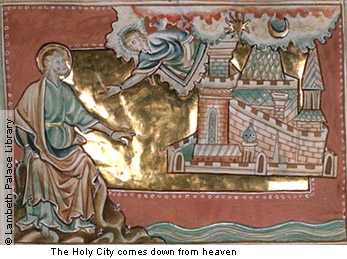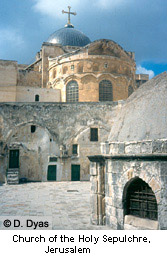
Pilgrimage in Christianity

Pilgrimage within Christianity is not a single idea but a cluster of concepts which emerged over several centuries.
Influences on the development of Christian pilgrimage include:
- the Bible (see Pilgrimage in the Bible)
- the writings of the Fathers of the Church (see Life as Pilgrimage in Early Christian Writers)
- the experiences of anchorites and monastic communities in the desert (see The Desert and the Growth of Monasticism)
- the classical pagan world (see Religious journeys in the Greek and Roman worlds)
- the instincts and experiences of ordinary people
Life as pilgrimage

Unlike Judaism from which it emerged, and the Greek and Roman religions with which it co-existed within the Roman Empire, Christianity did not at first see pilgrimage to sacred places as either necessary or desirable. Judaism emphasised the centrality of the land of Israel, the city of Jerusalem and the Temple, and had a well-established pattern of pilgrimage festivals. The writers of the New Testament and the early Fathers of the Church chose instead to emphasise the concept of life itself as a pilgrimage, a journey towards the heavenly city of Jerusalem described in the Book of Revelation.
Moral pilgrimage: the path of daily obedience
In both the New Testament and the writings of the Fathers of the Church, Christians are portrayed as 'pilgrims and strangers' on earth who have turned away from the disobedience of Adam and Eve which condemned human beings to hardship and exile from God's presence. As would-be citizens of heaven, they are to undertake a daily life of obedience to God which will eventually lead them to their true homeland in heaven.
Journeying to holy places

During the first three centuries of the Church, the emphasis on life as pilgrimage remained central. Since God was believed to be available everywhere through the Holy Spirit, Christians were not thought to need holy places.
In the fourth century, however, the Emperor Constantine was converted to Christianity. Used to the practices of pagan religion, including travelling to sacred places and shrines, Constantine and his mother Helena set about creating a Christian Holy Land. Not only was the special status of Jerusalem reasserted and many other sites linked with the Bible 'discovered' within Palestine, but a network of holy places was established across Christendom. This development, together with the growth of the cult of the saints, significantly changed Christian belief and practice. Visiting places considered sacred and 'seeing and touching' shrines and relics became very important.
Although hugely popular, these developments also provoked controversy and opposition (see Development of Christian Holy Places). There was an inescapable theological paradox in the idea of travelling to encounter a God believed to be omnipresent which has created debate and tensions within Christian spirituality ever since.
Interior pilgrimage

From the late third century onwards individuals retreated from Rome, Alexandria and other places to live as anchorites in the deserts of Judea and Sinai. Their goal was solitude and encounter with God. Life in the desert, whether alone or in the monastic communities which sprang up, was seen as a permanent state of pilgrimage-exile. Individuals committed themselves to stability of location so that their souls might journey inwardly. This remained a key concept as the monastic movement grew. During the centuries which followed, however, it was not always observed. Bishops, popes, and Councils of the Church repeatedly forbade monks and nuns to travel outside their cloisters, even to visit holy places, but such decrees were not always accepted or obeyed.
Continuity and controversy

From the fourth century onwards, there have been four main elements in the pilgrimage motif: the core concept of life as a journey towards the heavenly Jerusalem, together with three strands of practical interpretation:
Moral Pilgrimage: serving God and others in daily obedience.
Place Pilgrimage: including journeying to saints' shrines or other holy places to obtain forgiveness, seek healing and other benefits, to learn, to encounter God and express devotion.
Interior Pilgrimage: focusing on inner spiritual journeying through prayer and meditation, stressing 'stability' and seeking an 'interior Jerusalem' (the presence of God within the soul). Plays an important role within monasticism, anchoritism and mysticism.
The extent to which it is possible to combine these different strands of pilgrimage has generated considerable debate and even conflict. From the fourth century onwards there have been questions about whether 'place pilgrimage' actually supports or undermines the daily pilgrimage of life. Critics claimed it was unnecessary, since God was everywhere, and that it involved needless expense and dangers, the abandoning of daily responsibilities and might expose participants to temptation while away from home. Yet although the practice of pilgrimage to holy places and the value of the monastic orders have both been challenged over the centuries, not least at the Reformation, all strands of pilgrimage practice have nevertheless survived to the present day (see Christian Pilgrimage Today).
Dee Dyas



